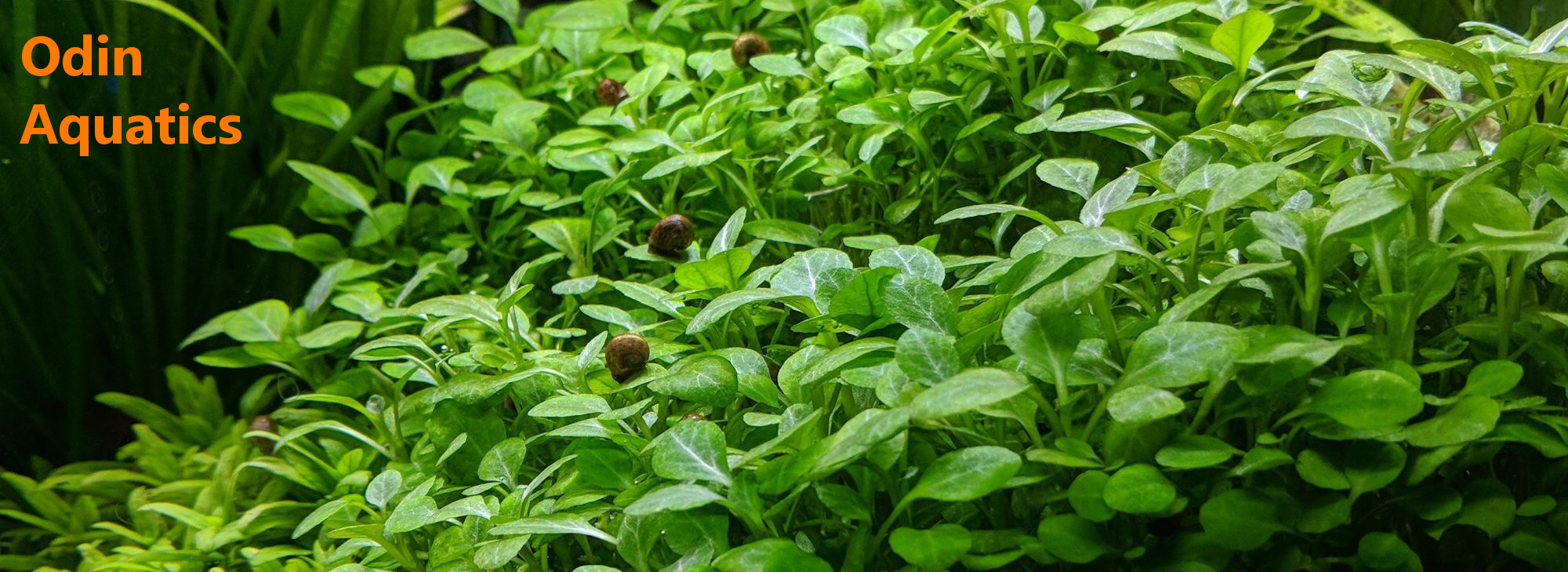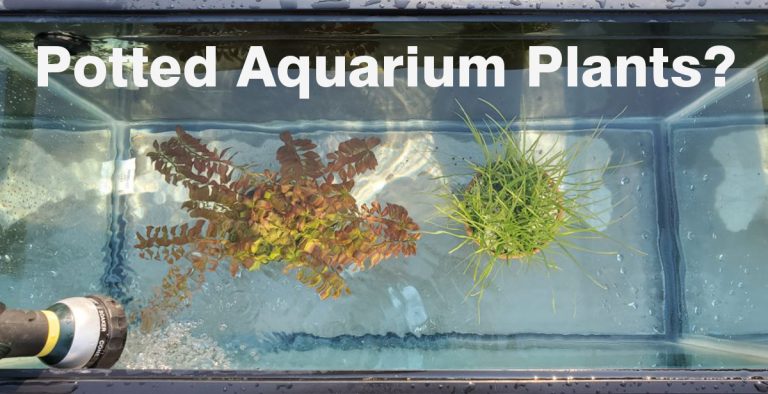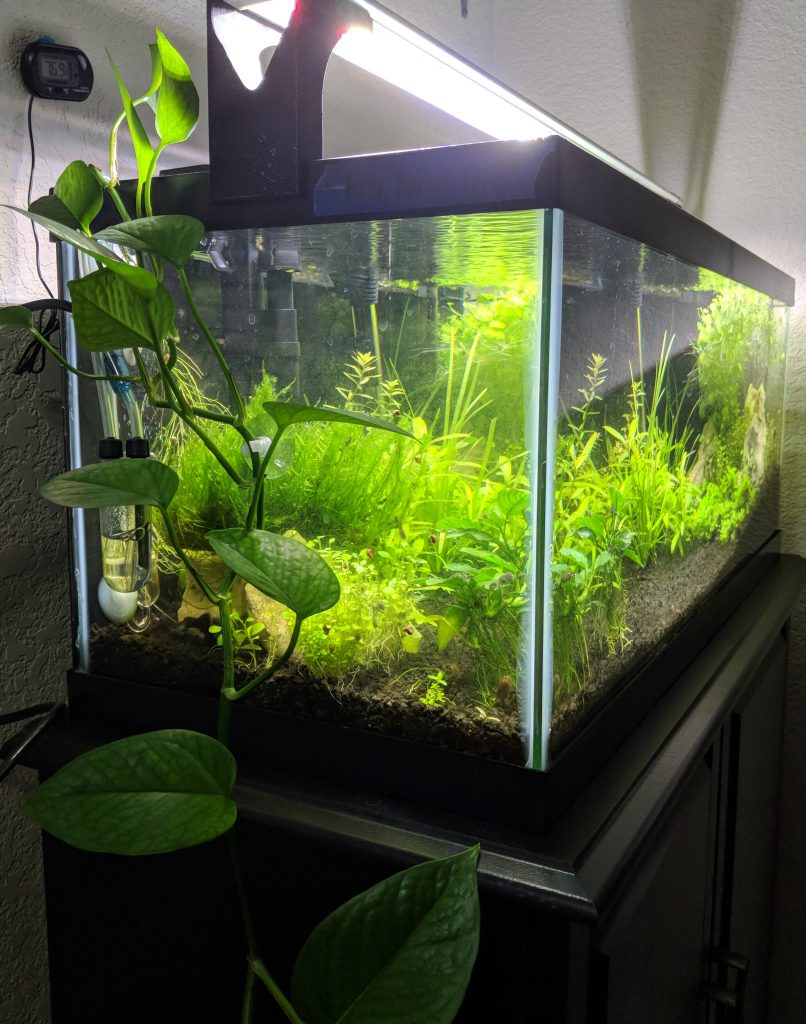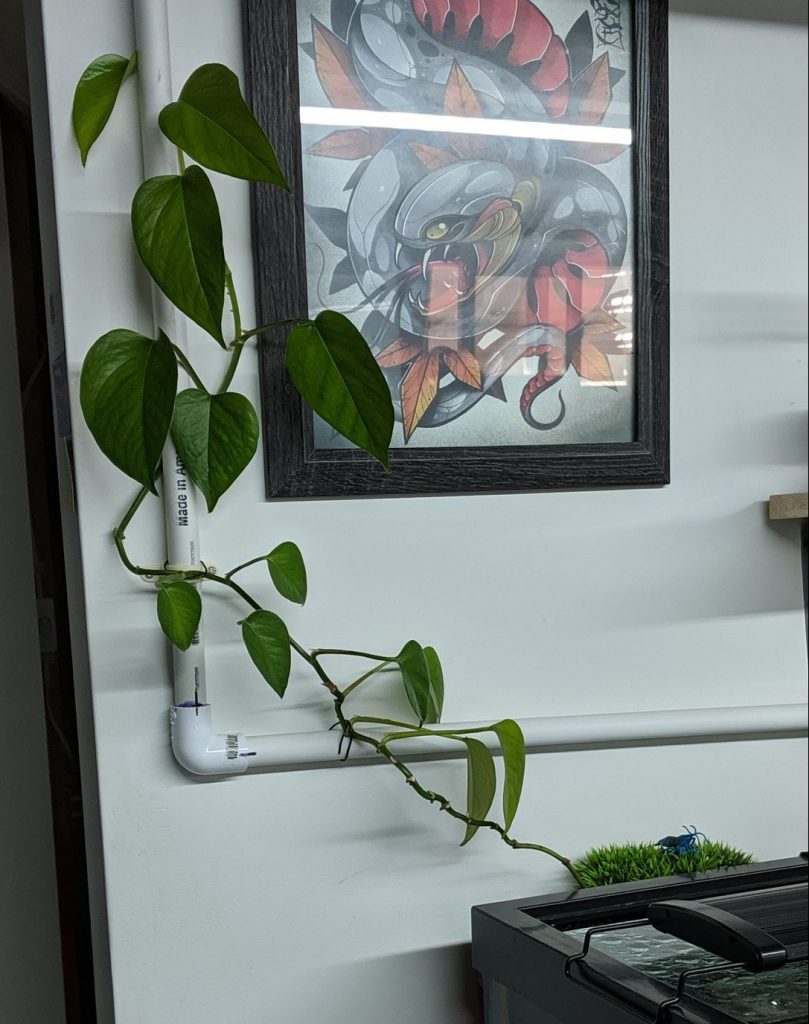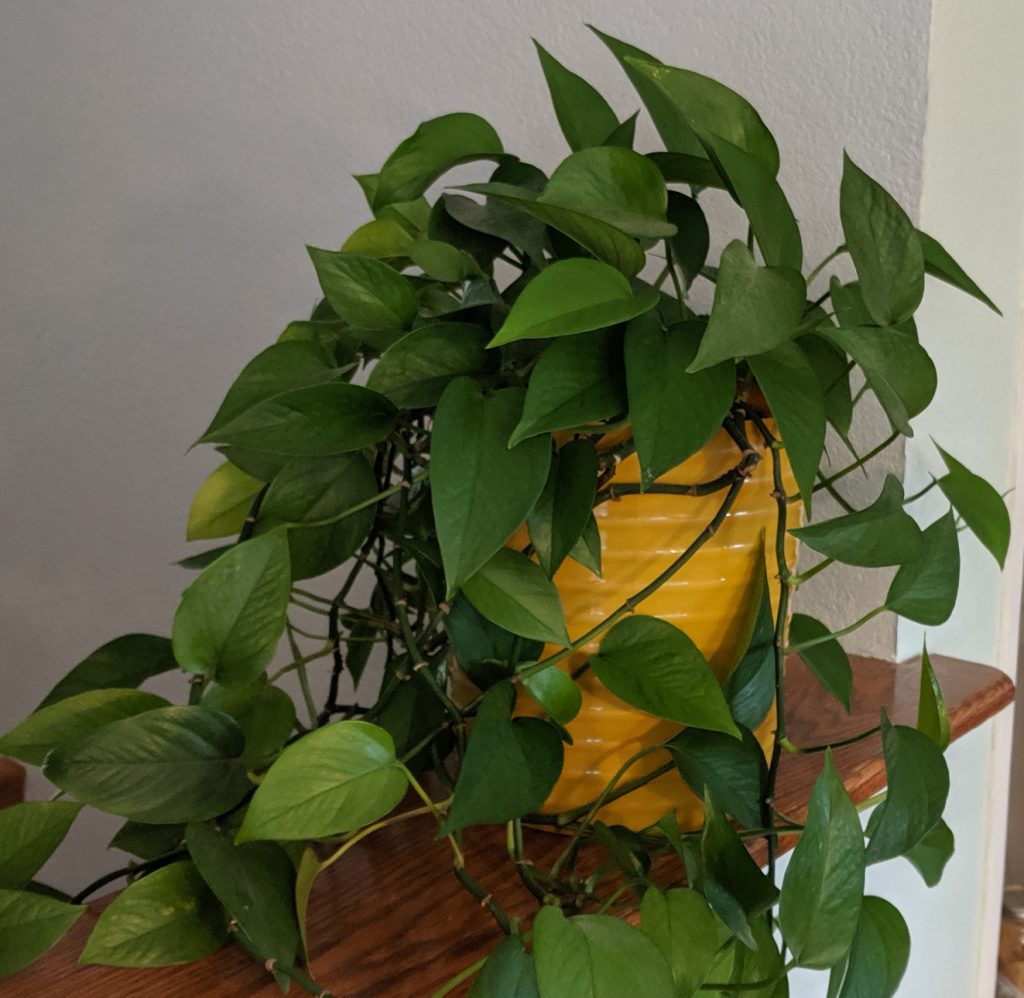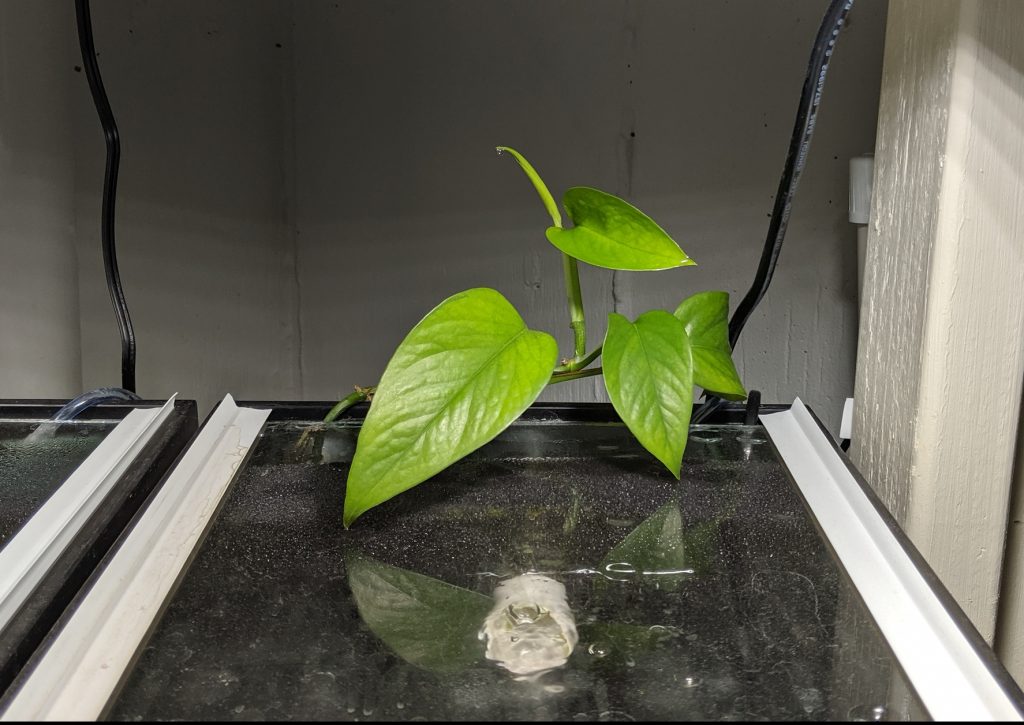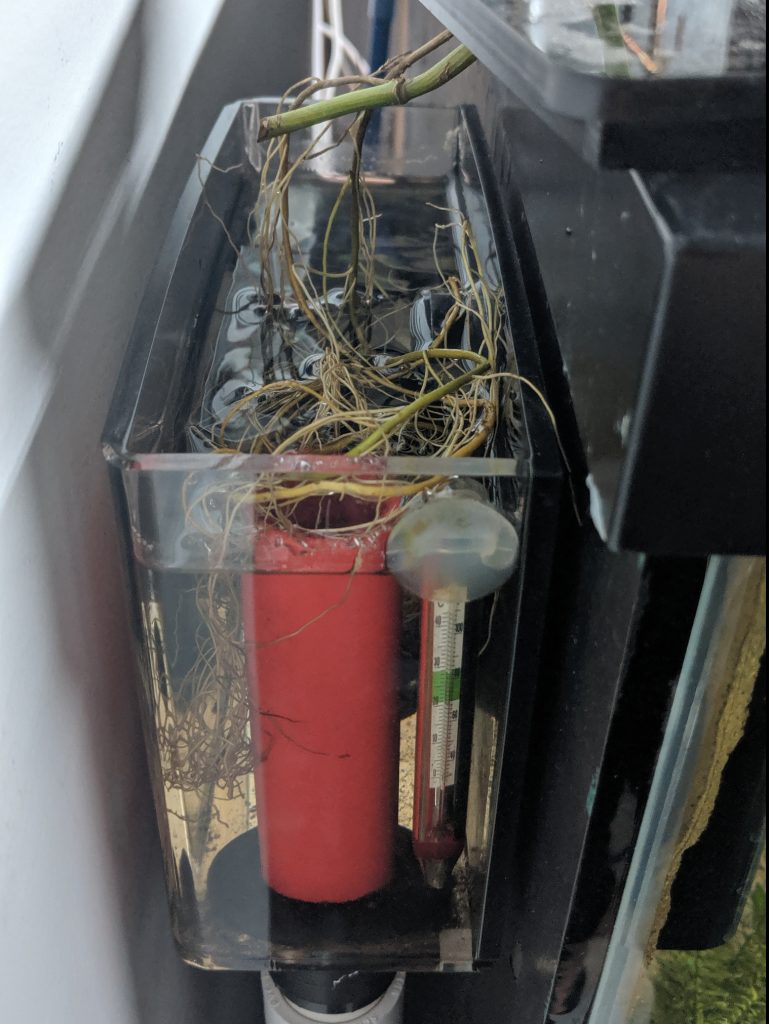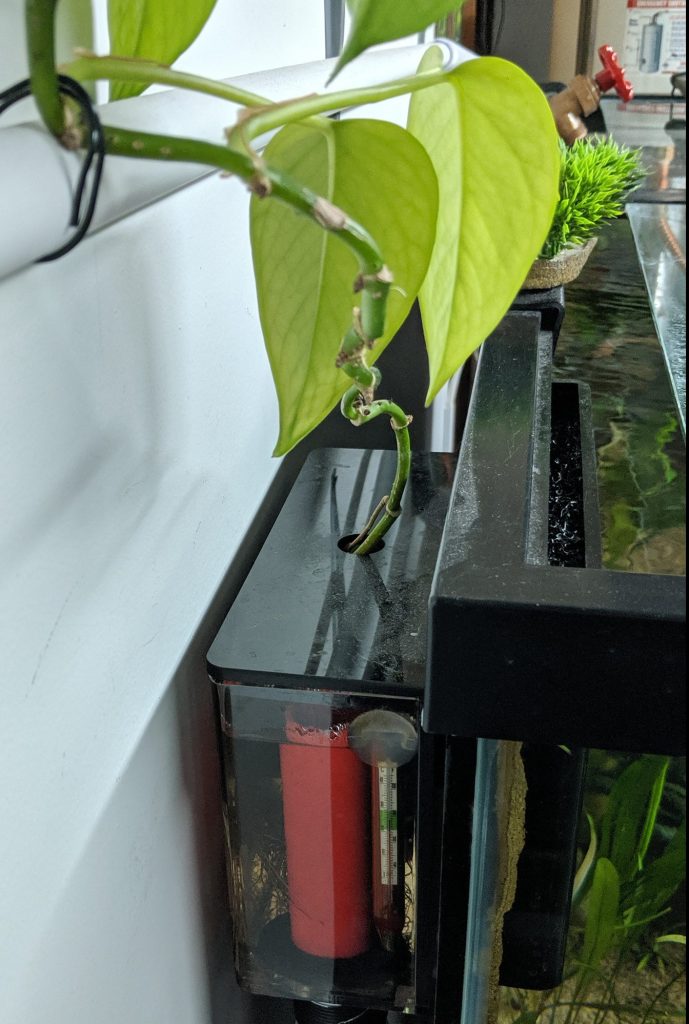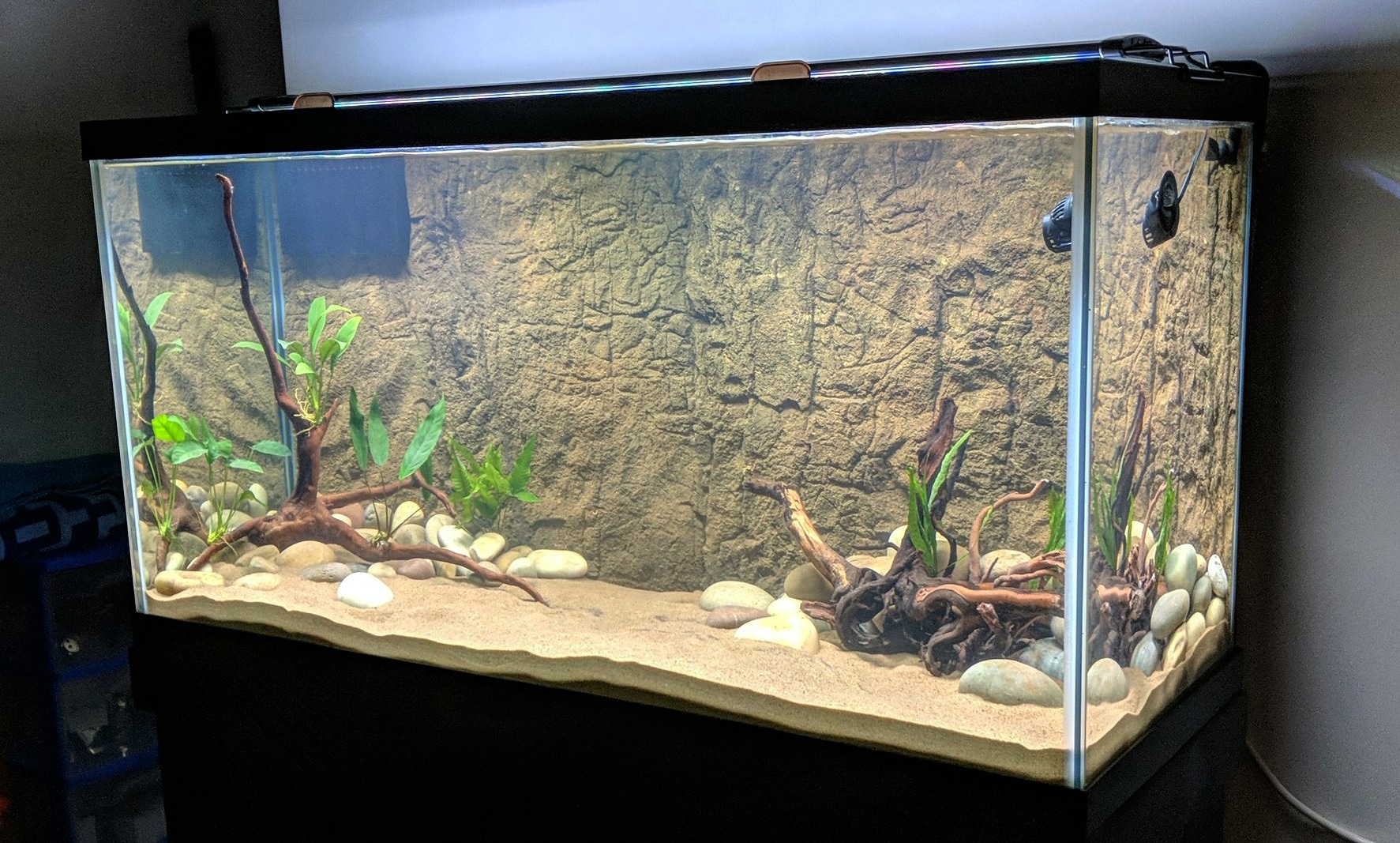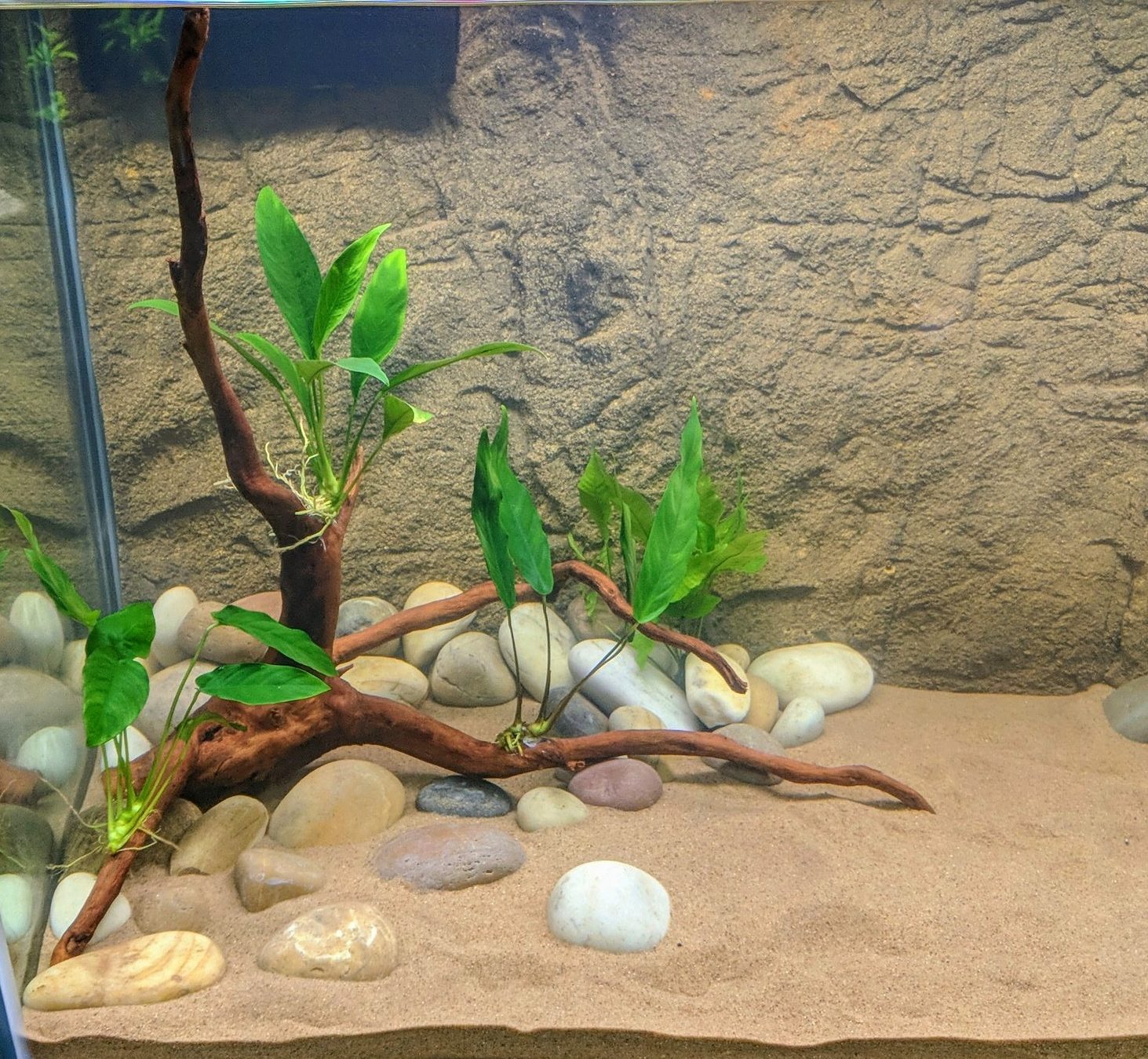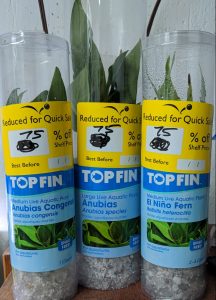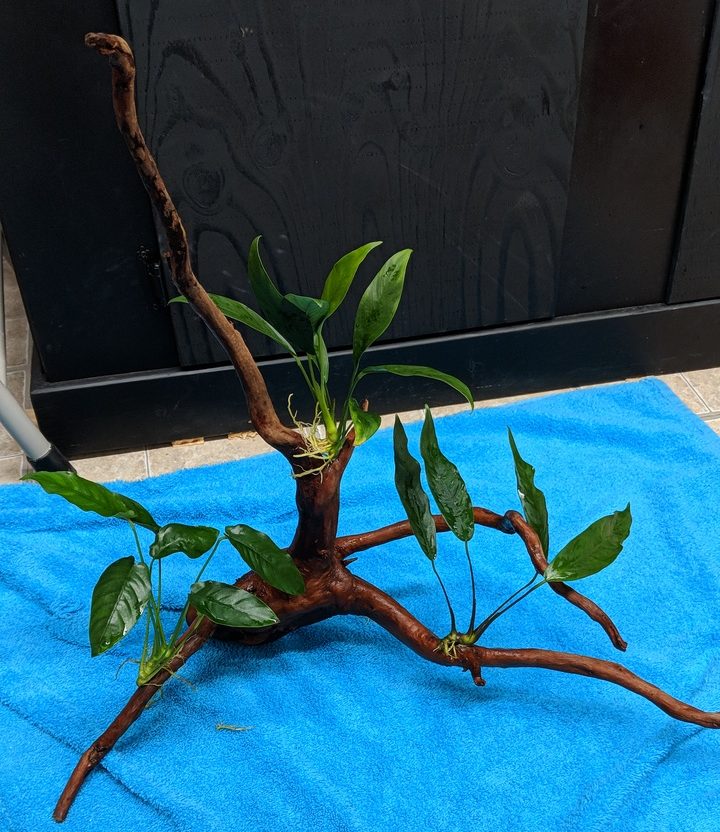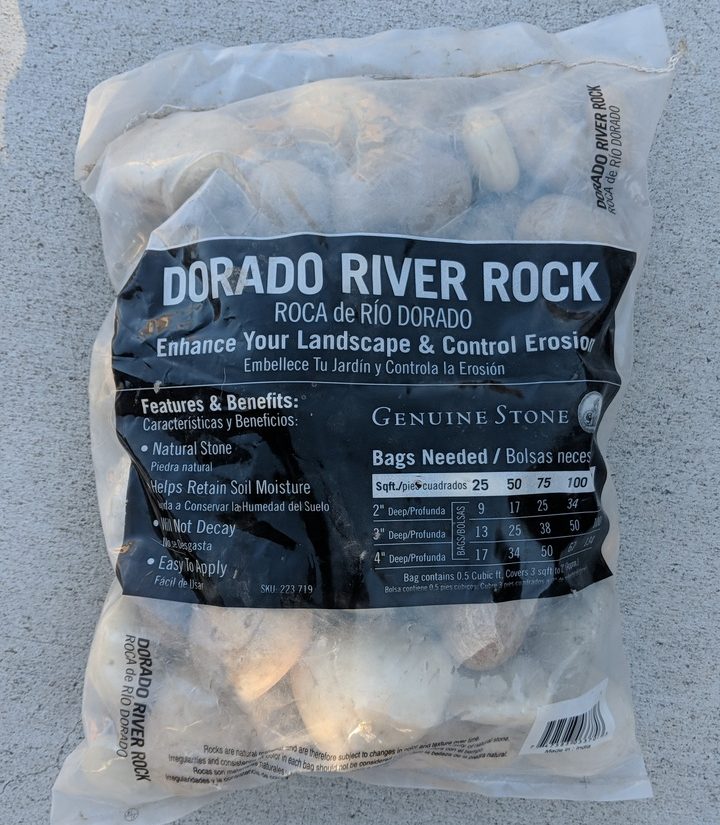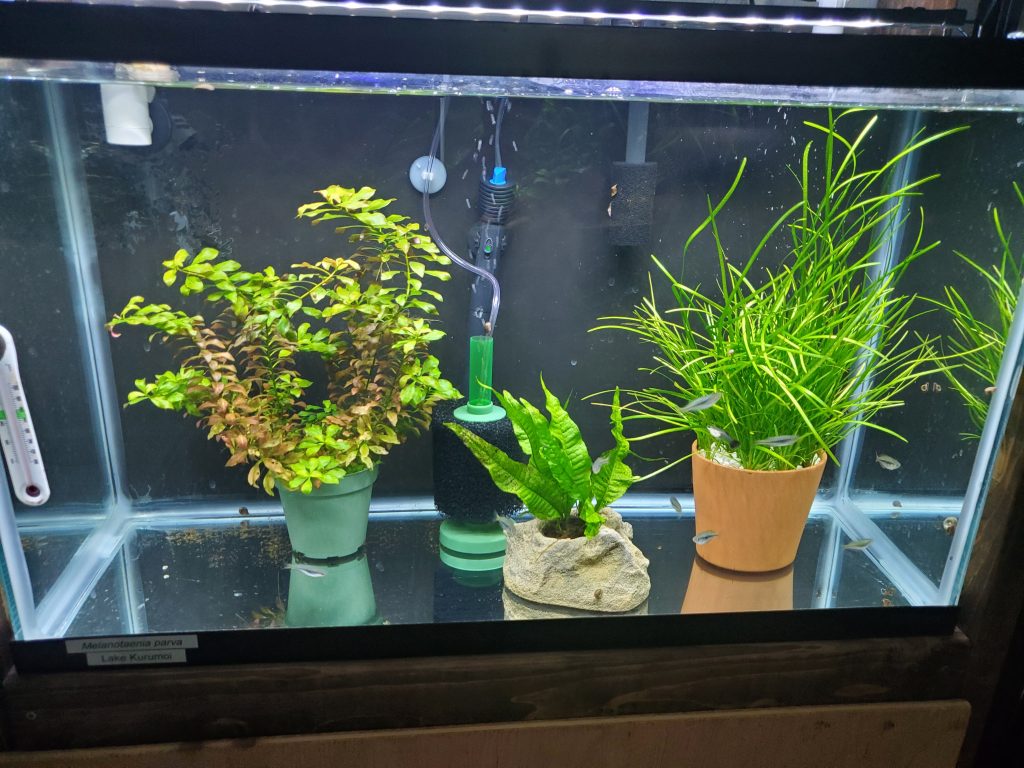
Why add potted plants to your fish tank?
Live plants come with a lot of benefits for your aquarium: they eat ammonia, they look better than fake plastic plants, they inhibit algae growth, and they create a more natural environment for your fish. More benefits of live plants are discussed in this post about pothos in the aquarium. But not every aquarium has a good substrate or the right conditions for planting live plants.
In breeding or quarantine setups you might want to run a bare bottom (like the tank pictured above). If you keep boisterous cichlids that like to dig, no plant is safe in a regular substrate. Maybe you need to be able to move plants around between aquariums easily. An easy solution in these cases is putting potted plants in your fish tank.
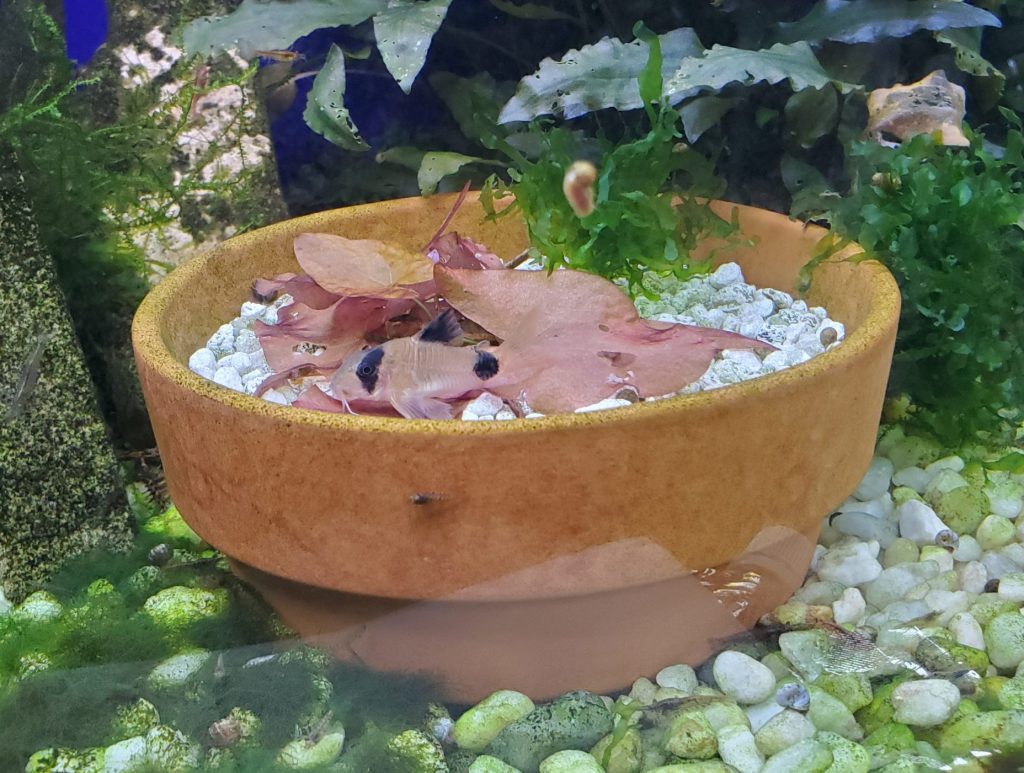
What kind of pots are safe for aquarium use?
The first step in adding potted plants to your aquarium is choosing the right containers. You have a lot of options here. Standard terra cotta clay pots, that are not painted or glazed, are safe for use in an aquarium. You can also use plastic plant pots, or upcycle any plastic container that is the right shape and size for your goals. A (thouroughly washed) yogurt container or plastic tupperware can hold substrate as well as any pot.
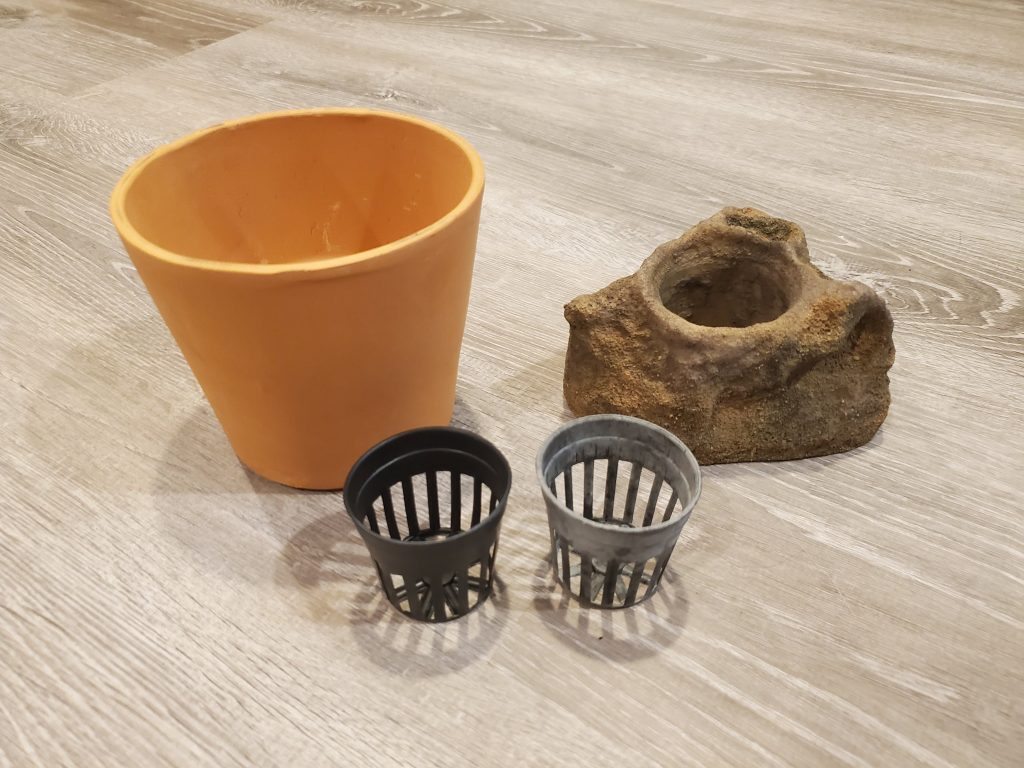
When choosing a container, keep in mind that some plants are heavy root feeders and will need some space for their roots to grow, while others can be planted in a shallow substrate. For example, java fern does not need any substrate at all, so you can use a very shallow pot to hold it in place. Plants like jungle val and amazon swords will want a deeper pot with a good quality substrate.
What substrate to put in aquarium plant pots?
Any aquarium substrate that you would use in your fish tank can work for potted aquatic plants. For root feeding plants, I recommend using some organic potting soil (sift and rinse it thoroughly first) capped with aquarium gravel. This will supply the plants with nutrients for years, while keeping them contained. This method works particularly well for valisneria, which will quickly take over a dirted tank if not contained.
Another option is to use regular aquarium gravel and add a few root tabs to the substrate to supply nutrients. Aquarium Co-op sells root tabs and other planted tank supplies. You can find root tabs on Amazon as well. These will need to be replaced every few months for the best results, but luckily theyre cheap.
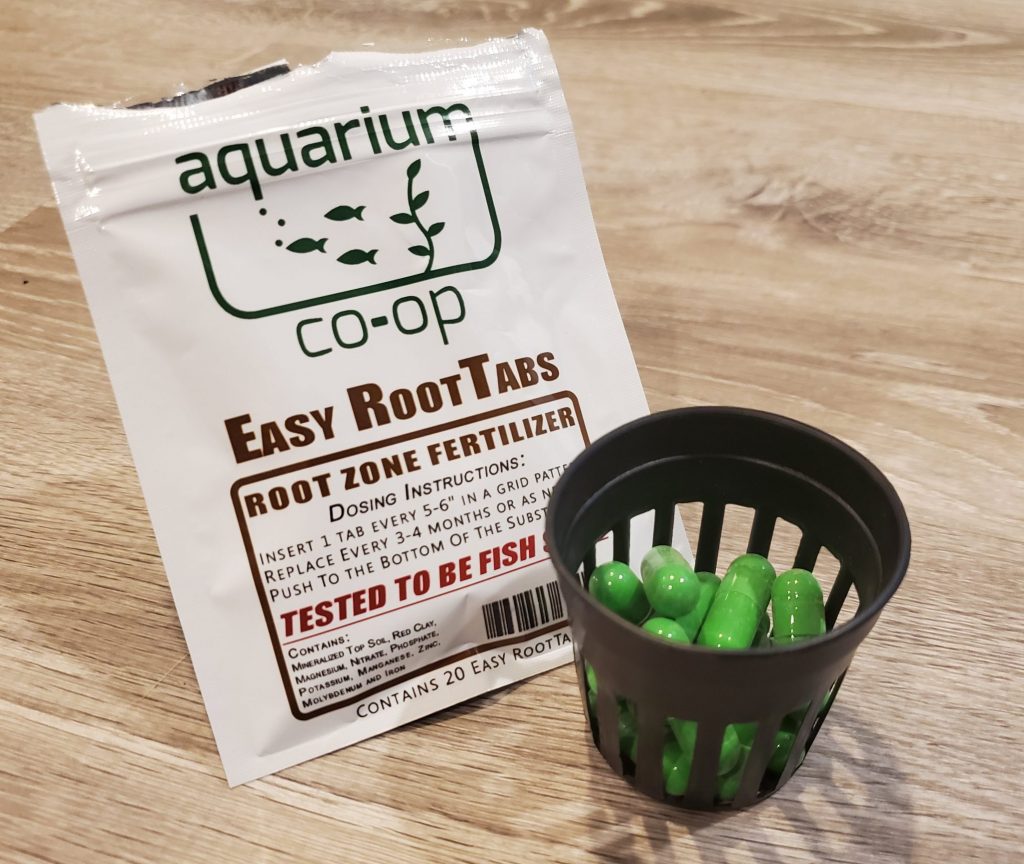
Rinse the pot or container before adding substrate. If it has large holes in the bottom, cover or plug them with some plastic (like a bottle cap) or mesh before the substrate goes in. This will prevent dirt or gravel from spilling out the bottom of the pot when it is lifted. A few small holes in the pot's bottom is actually ideal for a lot of plants, because their roots will be able to grow out through the bottom and pull more nutrients from the water column.

Adding your potted plants to your aquarium
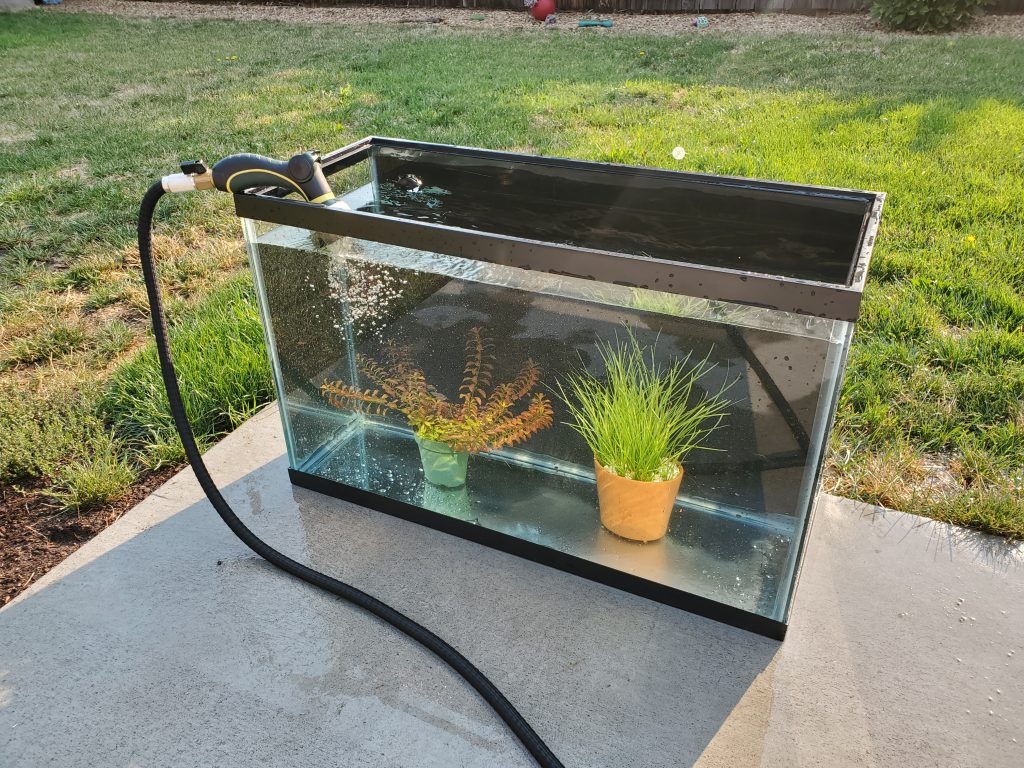
Once you've chosen a container and substrate and planted your plants, make sure you rinse the plant and the pot in some fresh water to remove any dust from the substrate before adding it to your aquarium. The greatest benefit of potted aquarium plants is you can re-arrange them easily, moving them around as often as you want. Dont hesitate to try a lot of different plants in a lot of different configurations!

